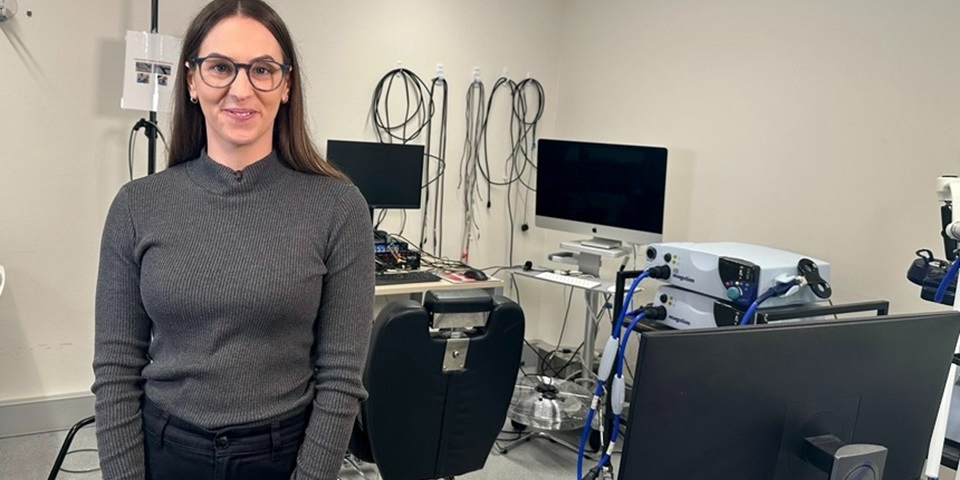News
Resting tremor in focus in new Parkinson’s study

Murdoch University's Centre for Healthy Ageing is identifying new interventions to treat resting tremor in people with Parkinson’s disease.
Tremor in Parkinson’s disease differs from most other tremors as it occurs primarily when the person is at rest. It usually starts in the hand, foot or leg and affects up to 80% of people with the disease.
A study led by Associate Professor Ann-Maree Vallence and Murdoch University PhD graduate Dr Brittany Rurak, from Murdoch's Centre for Healthy Ageing, investigated the connectivity between brain regions important for voluntary movement control in individuals with Parkinson’s disease, both on and off dopamine medication.
This was the first study to investigate connectivity between these motor areas in the brain using an advanced non-invasive brain stimulation technique called dual site transcranial magnetic simulation, in people with Parkinson’s disease.
“Our study showed that when people with Parkinson’s disease took levodopa, a dopamine medication, the connectivity between brain regions – the pathways for neural communication – was strengthened. And this strengthened connectivity was associated with the severity of their tremor symptom,” Associate Professor Ann-Maree Vallence said.
“We looked at two key brain regions for movement – the supplementary motor area and the primary motor cortex.
“These regions communicate with each other to enable our skilled and controlled movements.
“Tremor, which involves involuntary and rhythmic movements, is the most common presenting motor symptom in Parkinson's and tremors develop early in the disease.
“Levodopa medication is already commonly used in Parkinson’s, but this research helps us to understand the neural connections altered by the medication, and how this relates to tremor. In future, this could provide the evidence we need to develop new interventions.”
Findings from the study suggest that levodopa medication alters the connectivity between the supplementary motor area and primary motor cortex.
The effect of this medication is that it allows the brain areas to communicate more freely.
“Once on the medication, there was an association between tremor severity and supplementary motor area and primary motor cortex connectivity, resulting in reduced tremors,” Dr Rurak said.
The full report Cortico-cortical connectivity is influenced by levodopa in tremor-dominant Parkinson's disease is available in Neurobiology of Disease Journal.
The Centre for Healthy Ageing brings together researchers to investigate ways of maintaining quality of life and promoting healthy ageing in older adults.
News
Resting tremor in focus in new Parkinson’s study
Posted on
Topics